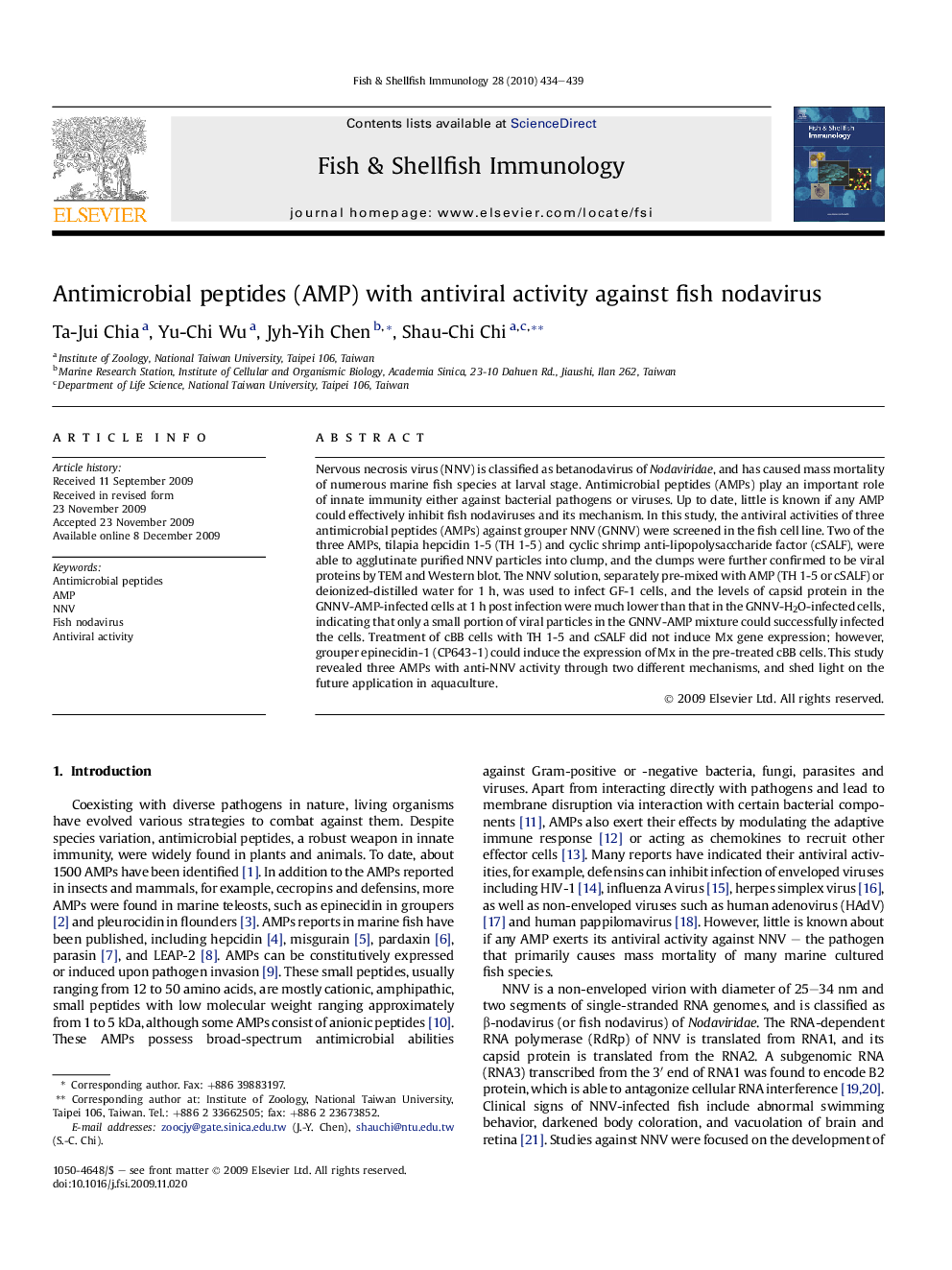| Article ID | Journal | Published Year | Pages | File Type |
|---|---|---|---|---|
| 2432817 | Fish & Shellfish Immunology | 2010 | 6 Pages |
Nervous necrosis virus (NNV) is classified as betanodavirus of Nodaviridae, and has caused mass mortality of numerous marine fish species at larval stage. Antimicrobial peptides (AMPs) play an important role of innate immunity either against bacterial pathogens or viruses. Up to date, little is known if any AMP could effectively inhibit fish nodaviruses and its mechanism. In this study, the antiviral activities of three antimicrobial peptides (AMPs) against grouper NNV (GNNV) were screened in the fish cell line. Two of the three AMPs, tilapia hepcidin 1-5 (TH 1-5) and cyclic shrimp anti-lipopolysaccharide factor (cSALF), were able to agglutinate purified NNV particles into clump, and the clumps were further confirmed to be viral proteins by TEM and Western blot. The NNV solution, separately pre-mixed with AMP (TH 1-5 or cSALF) or deionized-distilled water for 1 h, was used to infect GF-1 cells, and the levels of capsid protein in the GNNV-AMP-infected cells at 1 h post infection were much lower than that in the GNNV-H2O-infected cells, indicating that only a small portion of viral particles in the GNNV-AMP mixture could successfully infected the cells. Treatment of cBB cells with TH 1-5 and cSALF did not induce Mx gene expression; however, grouper epinecidin-1 (CP643-1) could induce the expression of Mx in the pre-treated cBB cells. This study revealed three AMPs with anti-NNV activity through two different mechanisms, and shed light on the future application in aquaculture.
